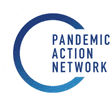In December 2021, the World Health Assembly (WHA) established an intergovernmental negotiating body (INB) to draft and negotiate an international instrument — supported by the World Health Organization (WHO) — to “strengthen pandemic prevention, preparedness and response.” In the decision establishing the INB, the WHA also requested the WHO to hold public hearings to inform its work and deliberations.
The first round of those public hearings took place April 12-13, 2022. In response to it, the Africa CSOs Working Group on Pandemic Preparedness and Response, convened by Pandemic Action Network and PATH, submitted the following substantive elements for inclusion in the new instrument:
- Recognize and protect the role of regional institutions and initiatives in responding to pandemics and epidemics as central in coordination, procurement, and distribution of medical products and tools, and technical support to respective member states. Such regional institutions should work in a coherent manner with global institutions.
- Establish and protect a global pandemic preparedness fund that involves countries across regions in its design, governance, and financing, with all countries contributing to such a fund, based on their ability to contribute. The fund should support health systems strengthening in geographies with weak health systems and should have a strong accountability mechanism.
- Elevate and prioritize leadership for future pandemics through, for example, a Global Health Threats Council, with meaningful leadership and representation from low- and middle-income countries. This body’s role will be to map out a strategic response that works for both public and private players in the health space.
- Prioritize and finance a globally networked surveillance and early-warning system with incentives for countries to share data on and sequence new variants and pathogens.
- Guarantee equity in access to lifesaving tools: declaring such tools as public goods and; instituting a waiver of intellectual property rights along with immediate hands-on technology transfer for all medical products and tools during a pandemic to ensure the maximum number of lives are saved, prioritizing the most vulnerable communities.



